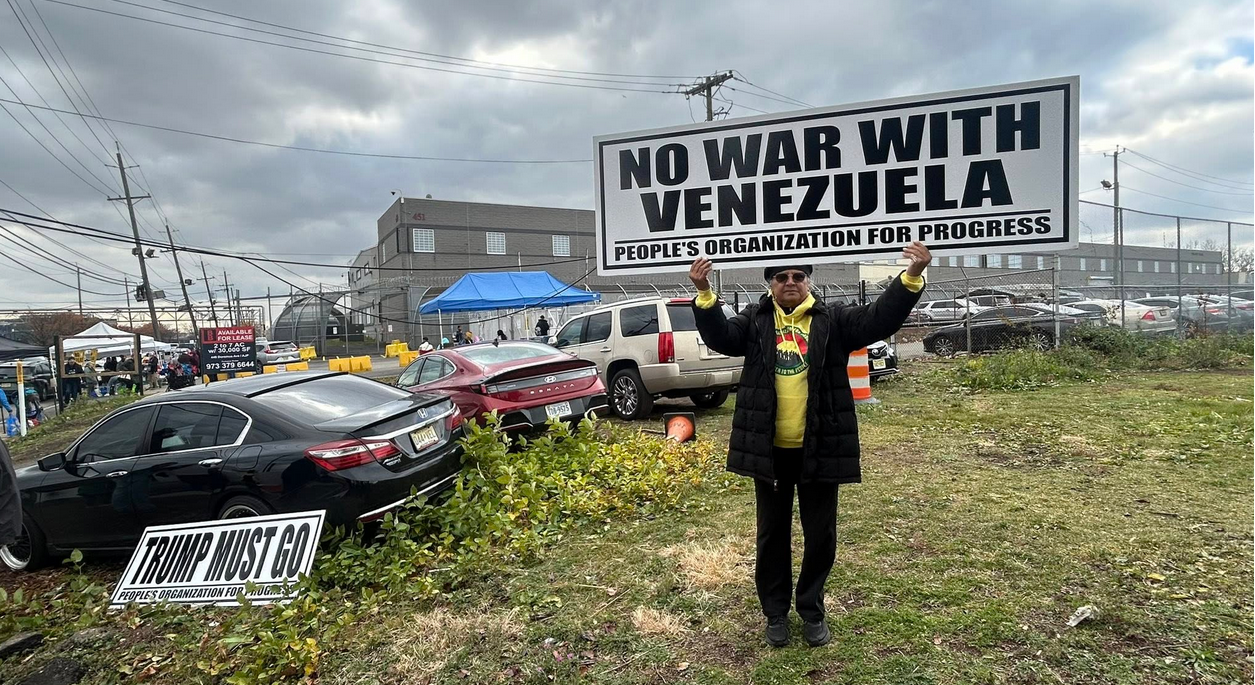For the GOP “White base,” Donald Trump to the rescue?
[Elections 2016]
White skin privilege is deteriorating and this is a defining issue of the 2016 election.
The great post-WW-II era of prosperity is over and postmodern inequality is intensifying. The economic and political crisis confronting a growing number of White Americans is driven less by people of color (who are generally poorer and suffer greater hardships), but by the policies of the – mostly White – “1 percent,” those with real power.
Often overlooked, the racism of White privilege plays a key – if unspoken – role in the repression of many White people. It keeps them blind, in denial, to the causes of their deepening immizeration.
Ann Coulter seems to have been the first to play the race card in the 2016 electoral beauty contest. “The way Republicans win is by driving up the White vote,” she argued in early June on Fox’s The O’Reilly Factor. “It is not by appealing to women or Hispanics or Blacks. In fact, those groups are going to start fighting among one another … How about, for once, appealing to your base? … How do we get pro-lifers to support us? Let’s get a slice of the evangelicals.”
A week or so after her pronouncement, Donald Trump announced his candidacy, proposing to implement Coulter’s strategy. He denounced Mexican immigrants: “They’re bringing drugs. They’re bringing crime. They’re rapists. And some, I assume, are good people.”
He promised, if elected he’d build a 2,000-mile-long wall to stop Mexico from “sending people that have lots of problems.” Recently, he proposed banning, for an unspecified period, Muslims from entering the U.S. A recent survey found that 76 percent of Republicans and 43 percent of Democrats believe that Islam is “at odds with American values and way of life.”
In November 2015, two Princeton economists, Anne Case and Angus Deaton a Nobel-Prize winner, published a rigorously-argued academic paper, ”Rising morbidity and mortality in midlife among white non-Hispanic Americans in the 21st century,” in the prestigious Proceedings of the National Academy of Sciences. It generated considerable – if short lived — media and public attention. Sadly, but not unexpected, the story found little resonance among the Republican presidential contestants.
The economists’ findings were that: “Over the 15-y[ear] period, midlife all-cause mortality fell by more than 200 per 100,000 for black non-Hispanics, and by more than 60 per 100,000 for Hispanics. By contrast, white non-Hispanic mortality rose by 34 per 100,000.” In one of their few non-technical digressions, the scholars acknowledge: “After the productivity slowdown in the early 1970s, and with widening income inequality, many of the baby-boom generation are the first to find, in midlife, that they will not be better off than were their parents. Growth in real median earnings has been slow for this group, especially those with only a high school education.”
The slow U.S. economic recovery since the Great Recession of 2007-2009 is gradually reducing both the poverty rate and the official unemployment rate.
However, the situation for White Americans, especially in the South, is troubling. When demographic and income factors are integrated into issues that define daily life — like housing, education, drug use, obesity and suicide – it looks pretty bleak. A consideration of a half-dozen economic and demographic factors suggest the deeper despair out of which a reactionary, nativist movement — epitomized by many Trump and other Republican supporters -– is festering.
Demographics: In 2014, the U.S. population was 318.9 million. It broke-down along the following racial/ethnic composition: White/non-Hispanic (62.1%); Hispanic/Latino (17.4%); African-American/Black (13.2%); Asian-American (5.4%); mixed race/two or more (2.5%); and Native-American/Indians (1.2%). Perhaps more telling, the White majority is projected to be eclipsed in 2043.
Poverty: In 2013, there were 97.8 million households in the U.S.; for all “White” households, the medium income was $55,257 and, for “White, not Hispanic” households it was $58,270. Nevertheless, the Census reported that as of 2013, nearly 30 million “White” Americans lived in poverty and that the total “White, not Hispanics” poverty level was 18.8 million people.
This situation is compounded by a deepening despair among those dubbed, “discouraged workers,” those who’ve stopped looking for work. CNBC recently reported, “8.5 million Americans still don’t have jobs, some 40 percent have given up even looking.” It’s the highest level of those who’ve stopped looking in more than a quarter century.
The Kaiser Family Foundation estimates, using Census data, 23 states had a poverty rate of 10 percent or greater. The highest rates of White poverty were in the South where an estimated 18.9 million people (16.1%) live in poverty. Per individual states, the highest rates were in Kentucky (18%), West Virginia (17%) and South Carolina (15%).
Housing: About nine million U.S. families lost their homes during the 2008-10 housing crisis. A revealing report from the Center of Responsible Lending, “Foreclosures by Race and Ethnicity: The Demographics of a Crisis,” points out, “the majority (an estimated 56%) of families who lost homes were non-Hispanic and white.” Going further, the study notes, “Non-Hispanic whites represent the majority of at-risk borrower” and that nearly one-sixth (14.8%) are “at imminent risk of foreclosure”; this is two-thirds the rate for Blacks and Hispanics.
Homelessness: In the 1950s and 1960s, the typical homeless person was White, male and in his 50s. Today, principally people of color suffer homelessness. The Institute for Children, Poverty and Homelessness estimated in 2012 that homelessness was experienced by 1 in 403 families; however, 1 in 141 African-American families experienced homeless compared to 1 in 990 White families.
The National Coalition for the Homeless estimated in 2009 that 35 percent of the homeless were White. It also noted, “people experiencing homelessness in rural areas are more likely to be white, female, married, currently working, homeless for the first time, and homeless for a shorter period of time.”
Education: Between 1990 and 2013, the percentage of White people 25- to 29-year who had received at least a high school diploma or its equivalent increased to 94 from 90 percent. More revealing, during that period the gap between White, Black and Hispanic high-school grads narrowed considerable. For African-Americans, it declined to 4 from 8 percent and for Hispanics it fell to 18 from 32 percent.
The 4-year graduation rate at the state level reveals a clearer picture of the long-term crisis facing White Americans. A revealing study, “State High School Graduation Rates By Race, Ethnicity,” drawing upon U.S. Department of Education data from the 2011-12 period, found the formal White graduation rate was 86 percent. Most disturbing, the White students in 20 states fell below 80 percent graduation rate.
Health: Americans are getting fatter, putting on the pounds. According to the Kaiser Family Foundation, nearly two-thirds (64%) of American adults are overweight. While people of color suffer higher rates of overweight than Whites, two-thirds of whites (63%) are overweight. The greatest concentration of overweight Whites is in red states: Alabama (66%), Arkansas (69%), Georgia (64%), Indiana (67%), Iowa (67%), Mississippi (67%), Nebraska (67%), North Dakota (68%), Oklahoma (67%), South Dakota (67%), Tennessee (68%), West Virginia (69%) and Wisconsin (67%).
Drug use: In 2013, an estimated 25 million Americans were illicit drug users, about 9.4 percent of the population aged 12 or older. This is up from the 2002-09 rate of 7.9 percent. The drugs used included marijuana/hashish, cocaine (including crack), heroin, hallucinogens, inhalants and prescription-type psychotherapeutics. Among Whites, illicit drug use increased to 9.5 percent from 8.5 percent in less then a decade.
According to the Centers for Disease Control (CDC), overdoses (i.e., “drug poisoning”) are “the number one cause of injury-related death in the United States, with 43,982 deaths occurring in 2013.” It found, based on data from 28 states, that the “death rate for heroin overdose doubled from 2010 through 2012.” Drilling down, it found there were 8,257 heroine deaths, most involving men aged 25–44 years.
Suicide: In 2013, Whites had the highest suicide rate in the country, at 14.2 per 100,000; American Indians and Alaska Natives were second with a rate of 11.7. However, during 2005–2009, the highest suicide rates were among American Indian/Alaskan Native males with 27.6 suicides and non-Hispanic white males with 25.96 suicides. Among women, non-Hispanic whites had the highest rate with 6.7 suicides.
Suicides among active duty personnel and veterans of the U.S. military is troubling, especially in light of the most recent wars in Afghanistan and Iraq and the aging of Vietnam War vets of the 1960s. The U.S. Army reports that between 2008 and 2012, the number of active duty solders who’ve committed suicide increased by 30 percent, to 349 from 268. While there is considerable debate about the extent of suicides among veterans, Sen. John McCain and others have cited Veterans Administration figures putting the total at 22 vets per day or over 8,000 a year. Many of these are White men.
Perhaps the most troubling factor compounding the crisis facing White America is the level of gun ownership. According to a 2014 Pew Research study, gun ownership is highest in the South, with a 38 percent of a family member owning a handgun or rifle; in the Northeast, ownership was at 27 percent.
In terms of gun ownership and political-party affiliation and ideology, the likely prevailed: Republicans (49%) and conservatives (41%) were more likely to own a gun than a Democrat (22%) or liberal (23%).
In 2015, the Brookings Institute reported, “the vast majority (77 percent) of white gun deaths are suicides; less than one in five (19 percent) is a homicide.”
Racism is America’s great shame. It is, to paraphrase Rap Brown, as American as apple pie. It’s embedded in the nation’s very founding, with the first Africans arriving as enslaved Africans and the Constitution establishing the value of an enslaved African at 3/5th a White citizen. A century-and-a-half after the Civil War, it still finds resonance among a significant segment of the White American electorate. It’s one of the defining issues of the 2016 election.
In the wake of the passage of the Civil Rights Act of 1964 and the Voting Rights Act of 1965, Republican politicians have followed what President Richard Nixon’s advisor, Patrick Buchanan, called the “Southern strategy.” It was a bargain struck between conservative Republican politicians and many White Americans to use the ballot to protect traditional “White skin privilege.”
For a half-century, the strategy proved successful, fostering an increasingly divided electorate along racial lines.
In 2008 and 2012, the race issue was embodied in one candidate, Barack Obama; racialists decisively lost – and they’ve never fully recovered. In 2016, race is no longer targeted at an individual candidate but is being expressed in the deepening crisis waged over the demographic and economic restructuring of American society.
The Republicans strategy has long sought to assure White voters, especially poor and working-class people, their “White skin privilege” made them better off than people of color.
Sadly, this story has long been true; for generations, on average, Whites have been better off then America’s demographic minorities. Racism is institutionalized in Americans life — and long worked.
However, race-based deception can only work for so long; its time is running out. A growing number of White Americans are feeling the geopolitical, historic squeeze. The pull between the Trump and Sanders campaigns illustrates how the crisis facing White – and all other – Americans is playing out. The 2016 vote will illuminate the nation’s future.
David Rosen is the author of the forthcoming, Sex, Sin & Subversion: The Transformation of 1950s New York’s Forbidden into America’s New Normal (Skyhorse/Carrel, Feb. 2016).
He can be reached at [email protected]
www.davidrosenwrites.com
© David Rosen, 2016






